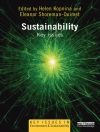Rapid population growth, urbanisation and industrialisation have caused serious problems in terms of water pollution and the supply of safe water. Solutions for monitoring pollutants in water and for removing them are urgently needed and they must be both efficient and sustainable.
Recent advances in emerging environmental nanotechnologies provide promising solutions for these issues. The physical and chemical properties of nanomaterials can be tailored by controlling attributes such as their size, shape, composition, and surface, so that they can be both highly specific and highly efficient. This makes them perfect platforms for a variety of environmental applications including sensing, treatment and remediation.
Providing an array of cutting-edge nanotechnology research in water applications, including sensing, treatment, and remediation, as well as a discussion of progress in the rational design and engineering of nanomaterials for environmental applications, this book is a valuable reference for researchers working in applications for nanotechnology, environmental chemistry and environmental engineering as well as those working in the water treatment industry.
Inhoudsopgave
Functionalized Metal Nanoclusters for Biosensing Applications;
Label-free Surface-enhanced Raman Spectroscopy for Water Pollutant Analysis;
Merging of MOFs and Graphene Analogous: Strategies for Enhanced Sensing Properties;
Nano Meets Membrane: Toward Enhancing the Performance of Water Treatment;
Tuning Iron Oxide-based Nanomaterials as Next Generation Adsorbents for Environmental Applications;
Novel Nanoadsorbents for the Separation of Hazardous Pollutants from Water;
Application of Titanate Nanotubes for Water Treatment;
Control of Disinfection Byproduct (DBP) Formation by Advanced Oxidation Processes (AOPs);
Nanocatalyst-enabled Persulfate Activation for Water Decontamination and Purification;
Fenton-like Nanocatalysts for Water Purification;
Functional Carbon Nanomaterials for Advanced Oxidation Processes;
Zero Valent Iron-induced Fenton-like Oxidation Towards Water Treatment;
Photocatalysis for Water Treatment: From Nanoparticle to Single Atom, From Lab-scale to Industry-trial;
The Potential Applications of MOF-based Materials in Wastewater Treatment;
Engineering Biochars for Environmental Applications;
Nanobubble Technology: Generation, Properties and Applications;
The Different Toxicity and Mechanism of Titanium Dioxide (Ti O2) and Titanate Nanotubes (TNTs) on Escherichia coli
Over de auteur
Dr. Wen Liu is a senior researcher and doctoral supervisor in Peking University (PKU), China. He also acts as the vice-director of Department of Environmental Engineering and the head of Environmental Nanotechnology Lab (ENL) in PKU. He got the Ph.D. degree from Peking University (2014), and then pursued the postdoctoral programs at Auburn University (2014-2016) and Georgia Institute of Technology (2016-2017) in USA. His research areas include environmental nanotechnology, environmental functional materials (especially titanate nanomaterials), water and wastewater treatment, new technologies for water cleanup.












